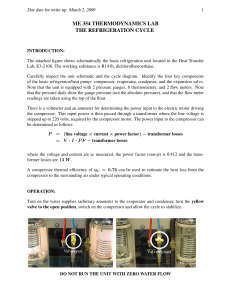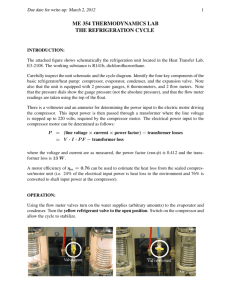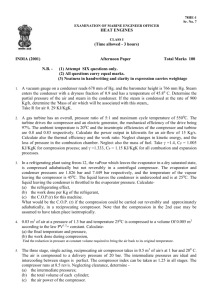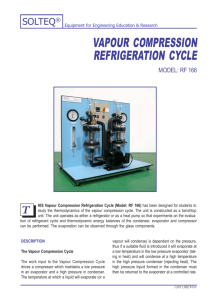Cooling and heating
advertisement
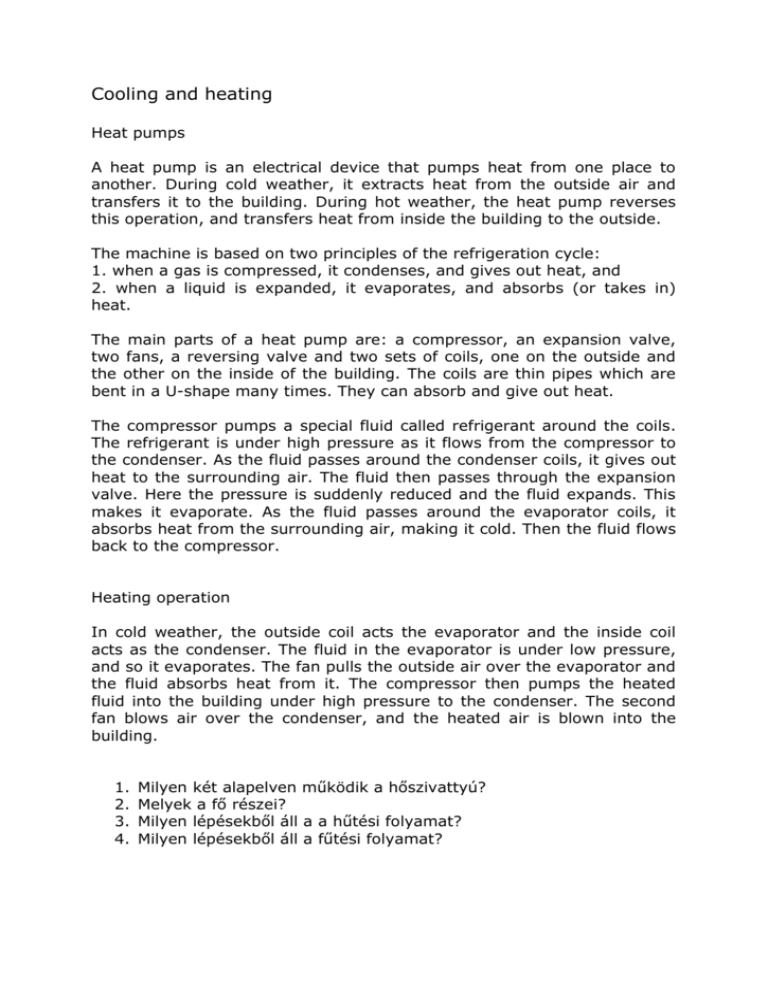
Cooling and heating Heat pumps A heat pump is an electrical device that pumps heat from one place to another. During cold weather, it extracts heat from the outside air and transfers it to the building. During hot weather, the heat pump reverses this operation, and transfers heat from inside the building to the outside. The machine is based on two principles of the refrigeration cycle: 1. when a gas is compressed, it condenses, and gives out heat, and 2. when a liquid is expanded, it evaporates, and absorbs (or takes in) heat. The main parts of a heat pump are: a compressor, an expansion valve, two fans, a reversing valve and two sets of coils, one on the outside and the other on the inside of the building. The coils are thin pipes which are bent in a U-shape many times. They can absorb and give out heat. The compressor pumps a special fluid called refrigerant around the coils. The refrigerant is under high pressure as it flows from the compressor to the condenser. As the fluid passes around the condenser coils, it gives out heat to the surrounding air. The fluid then passes through the expansion valve. Here the pressure is suddenly reduced and the fluid expands. This makes it evaporate. As the fluid passes around the evaporator coils, it absorbs heat from the surrounding air, making it cold. Then the fluid flows back to the compressor. Heating operation In cold weather, the outside coil acts the evaporator and the inside coil acts as the condenser. The fluid in the evaporator is under low pressure, and so it evaporates. The fan pulls the outside air over the evaporator and the fluid absorbs heat from it. The compressor then pumps the heated fluid into the building under high pressure to the condenser. The second fan blows air over the condenser, and the heated air is blown into the building. 1. 2. 3. 4. Milyen két alapelven működik a hőszivattyú? Melyek a fő részei? Milyen lépésekből áll a a hűtési folyamat? Milyen lépésekből áll a fűtési folyamat?



